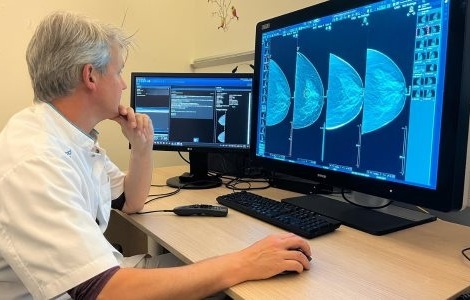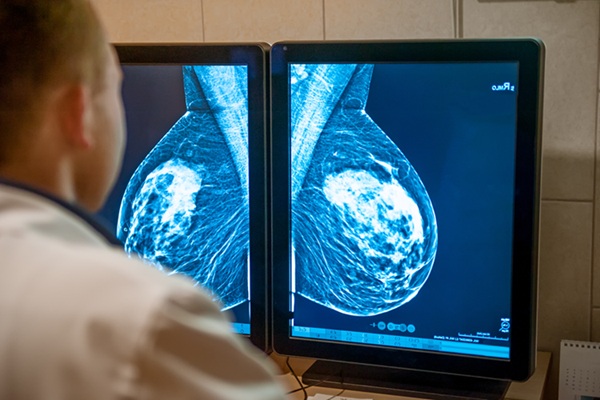4K Surgical Imaging System Provides Exceptional Image Quality
|
By MedImaging International staff writers Posted on 07 Oct 2019 |

Image: The LENS 4K surgical imaging system (Photo courtesy of Smith+Nephew).
A state-of-the-art 4K imaging visualization platform with end-to-end connectivity provides improved workflow integration to ambulatory and multi-specialty surgical centers.
The Smith+Nephew (London, United Kingdom) LENS 4K system features a camera control unit with an integrated light source, a camera head, image management options, and a tablet application, all in a single solution. The system has also been designed to minimize the complexity in equipment management and maximize operating room (OR) workflows by improving image and video capture, facilitating imaging file transfers to the electronic medical record (EMR) and to picture archiving and communication systems (PACS), and report creation for patient communication.
The system uses the latest native 4K 3CMOS Ultra High Definition (UHD) technology, combined with Smith+Nephew's proprietary image and light processing in order to create a blend of impressive color reproduction, image clarity, and depth of field. The LENS 4K system introduces an autoclavable camera head that is ergonomically shaped for balance and comfort in a surgeon's hand. Programmable buttons on the camera head allow surgeons to control common functions, and when used with the LENS iPad application, it also includes settings that may be controlled outside the surgical field.
“We are thrilled to introduce LENS 4K to a market that is demanding elite visual precision for surgeons performing arthroscopic procedures,” said Scott Schaffner, senior VP of Smith+Nephew sports medicine marketing. “The LENS 4K image quality is extraordinary and combined with our integration technology to distribute surgical images and content, we are uniquely positioned to address the entire surgical workflow environment.”
4K resolution actually refers to a horizontal resolution of 4,096 pixels. The use of width to characterize the overall resolution marks a switch from previous video standards such as 480i and 1080p, which categorize media according to its vertical dimension. Using that same convention, 4K vertical resolution is 2160 pixels. The increased number of pixels provides a sharper, more detailed image with four times the resolution of HD, offering enhanced clarity, higher contrast, and more accurate color reproduction.
The Smith+Nephew (London, United Kingdom) LENS 4K system features a camera control unit with an integrated light source, a camera head, image management options, and a tablet application, all in a single solution. The system has also been designed to minimize the complexity in equipment management and maximize operating room (OR) workflows by improving image and video capture, facilitating imaging file transfers to the electronic medical record (EMR) and to picture archiving and communication systems (PACS), and report creation for patient communication.
The system uses the latest native 4K 3CMOS Ultra High Definition (UHD) technology, combined with Smith+Nephew's proprietary image and light processing in order to create a blend of impressive color reproduction, image clarity, and depth of field. The LENS 4K system introduces an autoclavable camera head that is ergonomically shaped for balance and comfort in a surgeon's hand. Programmable buttons on the camera head allow surgeons to control common functions, and when used with the LENS iPad application, it also includes settings that may be controlled outside the surgical field.
“We are thrilled to introduce LENS 4K to a market that is demanding elite visual precision for surgeons performing arthroscopic procedures,” said Scott Schaffner, senior VP of Smith+Nephew sports medicine marketing. “The LENS 4K image quality is extraordinary and combined with our integration technology to distribute surgical images and content, we are uniquely positioned to address the entire surgical workflow environment.”
4K resolution actually refers to a horizontal resolution of 4,096 pixels. The use of width to characterize the overall resolution marks a switch from previous video standards such as 480i and 1080p, which categorize media according to its vertical dimension. Using that same convention, 4K vertical resolution is 2160 pixels. The increased number of pixels provides a sharper, more detailed image with four times the resolution of HD, offering enhanced clarity, higher contrast, and more accurate color reproduction.
Latest General/Advanced Imaging News
- AI Tool Improves Medical Imaging Process by 90%
- New Ultrasmall, Light-Sensitive Nanoparticles Could Serve as Contrast Agents
- AI Algorithm Accurately Predicts Pancreatic Cancer Metastasis Using Routine CT Images
- Cutting-Edge Angio-CT Solution Offers New Therapeutic Possibilities
- Extending CT Imaging Detects Hidden Blood Clots in Stroke Patients
- Groundbreaking AI Model Accurately Segments Liver Tumors from CT Scans
- New CT-Based Indicator Helps Predict Life-Threatening Postpartum Bleeding Cases
- CT Colonography Beats Stool DNA Testing for Colon Cancer Screening
- First-Of-Its-Kind Wearable Device Offers Revolutionary Alternative to CT Scans
- AI-Based CT Scan Analysis Predicts Early-Stage Kidney Damage Due to Cancer Treatments
- CT-Based Deep Learning-Driven Tool to Enhance Liver Cancer Diagnosis
- AI-Powered Imaging System Improves Lung Cancer Diagnosis
- AI Model Significantly Enhances Low-Dose CT Capabilities
- Ultra-Low Dose CT Aids Pneumonia Diagnosis in Immunocompromised Patients
- AI Reduces CT Lung Cancer Screening Workload by Almost 80%
- Cutting-Edge Technology Combines Light and Sound for Real-Time Stroke Monitoring
Channels
Radiography
view channel
AI Generates Future Knee X-Rays to Predict Osteoarthritis Progression Risk
Osteoarthritis, a degenerative joint disease affecting over 500 million people worldwide, is the leading cause of disability among older adults. Current diagnostic tools allow doctors to assess damage... Read more
AI Algorithm Uses Mammograms to Accurately Predict Cardiovascular Risk in Women
Cardiovascular disease remains the leading cause of death in women worldwide, responsible for about nine million deaths annually. Despite this burden, symptoms and risk factors are often under-recognized... Read moreMRI
view channel
AI-Assisted Model Enhances MRI Heart Scans
A cardiac MRI can reveal critical information about the heart’s function and any abnormalities, but traditional scans take 30 to 90 minutes and often suffer from poor image quality due to patient movement.... Read more
AI Model Outperforms Doctors at Identifying Patients Most At-Risk of Cardiac Arrest
Hypertrophic cardiomyopathy is one of the most common inherited heart conditions and a leading cause of sudden cardiac death in young individuals and athletes. While many patients live normal lives, some... Read moreUltrasound
view channel
Ultrasound Probe Images Entire Organ in 4D
Disorders of blood microcirculation can have devastating effects, contributing to heart failure, kidney failure, and chronic diseases. However, existing imaging technologies cannot visualize the full network... Read more
Disposable Ultrasound Patch Performs Better Than Existing Devices
Wearable ultrasound devices are widely used in diagnostics, rehabilitation monitoring, and telemedicine, yet most existing models rely on lead-based piezoelectric ceramics that pose health and environmental risks.... Read moreNuclear Medicine
view channel
Radiotheranostic Approach Detects, Kills and Reprograms Aggressive Cancers
Aggressive cancers such as osteosarcoma and glioblastoma often resist standard therapies, thrive in hostile tumor environments, and recur despite surgery, radiation, or chemotherapy. These tumors also... Read more
New Imaging Solution Improves Survival for Patients with Recurring Prostate Cancer
Detecting recurrent prostate cancer remains one of the most difficult challenges in oncology, as standard imaging methods such as bone scans and CT scans often fail to accurately locate small or early-stage tumors.... Read moreImaging IT
view channel
New Google Cloud Medical Imaging Suite Makes Imaging Healthcare Data More Accessible
Medical imaging is a critical tool used to diagnose patients, and there are billions of medical images scanned globally each year. Imaging data accounts for about 90% of all healthcare data1 and, until... Read more
Global AI in Medical Diagnostics Market to Be Driven by Demand for Image Recognition in Radiology
The global artificial intelligence (AI) in medical diagnostics market is expanding with early disease detection being one of its key applications and image recognition becoming a compelling consumer proposition... Read moreIndustry News
view channel
GE HealthCare and NVIDIA Collaboration to Reimagine Diagnostic Imaging
GE HealthCare (Chicago, IL, USA) has entered into a collaboration with NVIDIA (Santa Clara, CA, USA), expanding the existing relationship between the two companies to focus on pioneering innovation in... Read more
Patient-Specific 3D-Printed Phantoms Transform CT Imaging
New research has highlighted how anatomically precise, patient-specific 3D-printed phantoms are proving to be scalable, cost-effective, and efficient tools in the development of new CT scan algorithms... Read more
Siemens and Sectra Collaborate on Enhancing Radiology Workflows
Siemens Healthineers (Forchheim, Germany) and Sectra (Linköping, Sweden) have entered into a collaboration aimed at enhancing radiologists' diagnostic capabilities and, in turn, improving patient care... Read more





















